► Dacia’s baby Spring EV is coming to the UK
► We drive it on UK roads
► Likely circa-£20k RHD model will come with 2024 facelift
The electric car is still an expensive product. But, as car makers spend late nights and weekends looking at how to bring the price parity with a combustion engine car closer, Dacia managed to turn the entire pursuit on its head when it launched the Spring EV in 2021.
And, after a couple of years on sale in Continental Europe (seemingly a runaway success with more than 120,000 registrations in two years), Dacia has announced it will sell the Spring EV in the UK.
CAR got a chance to take a spin in what will likely be one of the cheapest electric cars on the market when it launches.
Before we go anywhere, when will the Spring launch in the UK?
Well, for starters the Spring will be facelifted in 2024, which will include the introduction of a right-hand drive model. Dacia says to expect the facelift to be revealed in the first half of 2024, with UK sales commencing in the autumn of the same year. The facelift is said to be mostly cosmetic, with some engineering tweaks to keep it in line with the new General Safety Regulation 2 rules. Even with the facelift, though, the basic powertrain and platform will remain the same – hence our opportunity to drive the pre-facelift car.
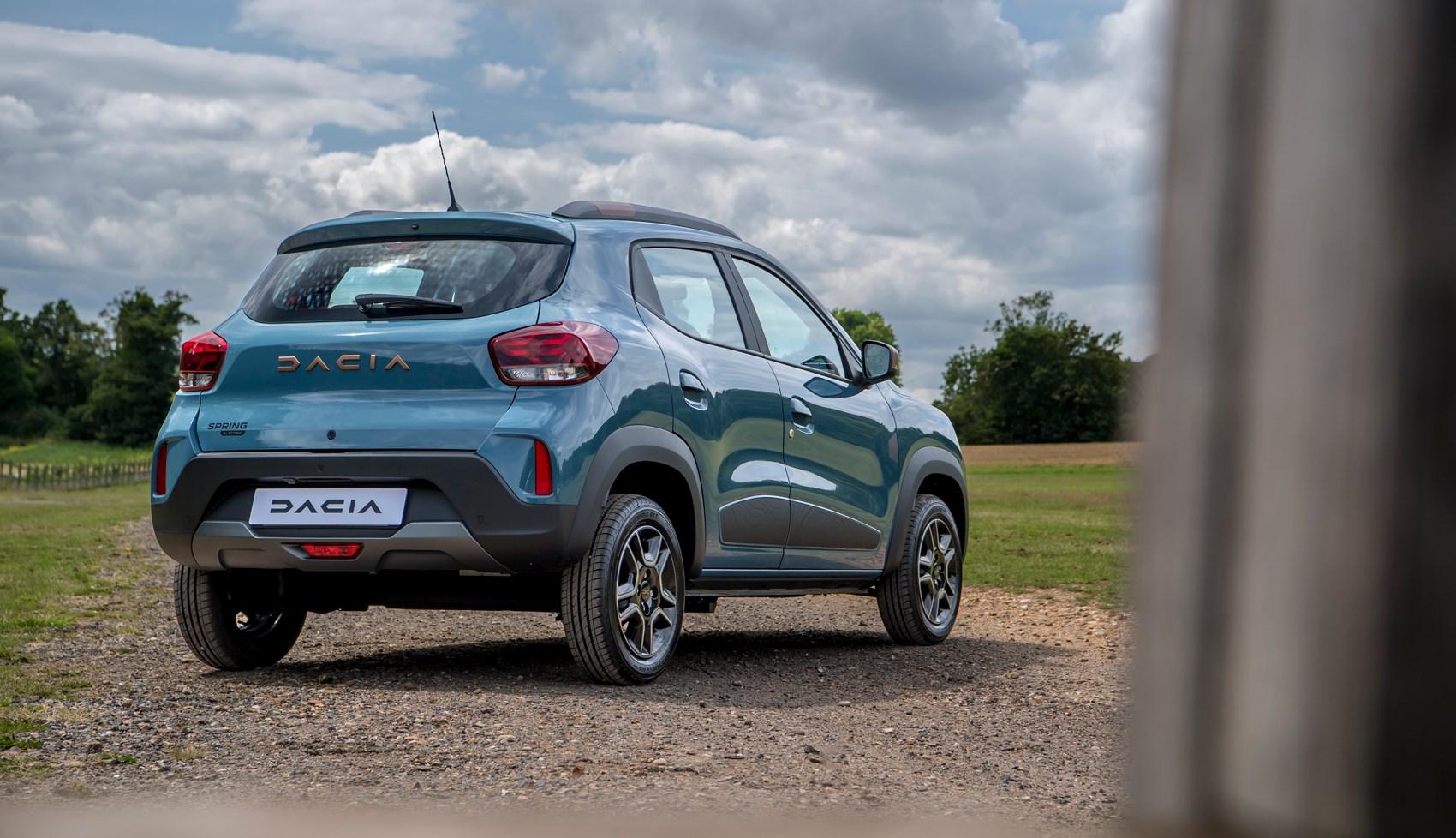
While a price isn’t confirmed yet for the UK-spec cars, you can currently get a Spring (in the spec we’ve driven it in) in France for €22,300 before any grants or tax breaks.
Gimme the Spring brain dump, then – what do I need to know?
We’re expecting to get the more powerful of the two Spring variants when it hits the UK: the Electric 65 (there’s also an Electric 45 available in other markets).

For the 65, Spring buyers will benefit from a 26.8kWh battery pack, a 64bhp electric motor (which means a 0-62mph sprint in 13.7 seconds and a top speed of 78mph) and a claimed range of 137 miles on a WLTP mixed cycle.
As for charging, Dacia says the Spring takes around 13 hours on a three-pin socket to charge, or around five hours for a 7kW wallbox. There is also DC fast charging available, with the Spring taking a 0-80 per cent charge in under an hour.
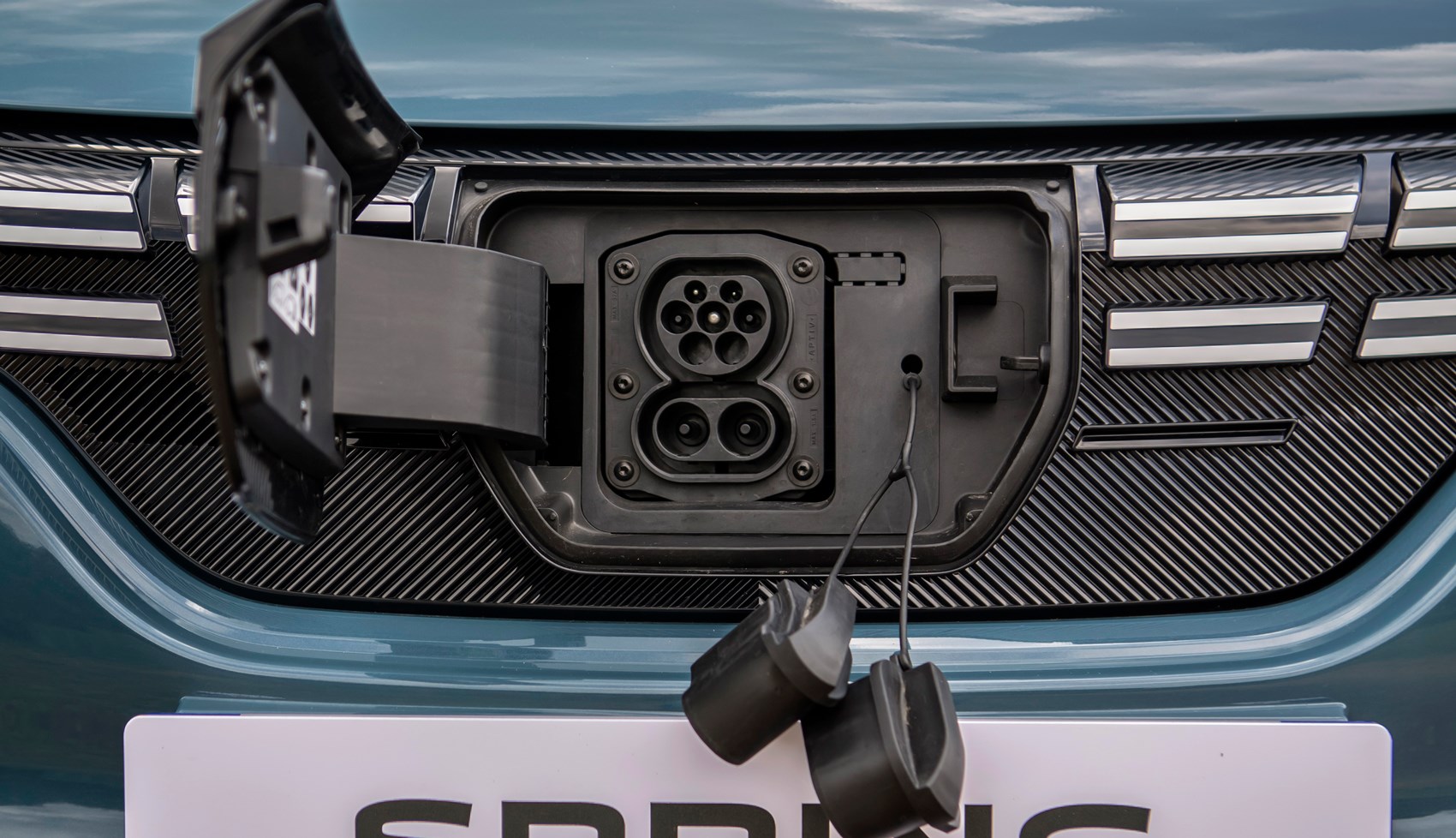
Tied to that Electric 65 powertrain is the Extreme trim. If you’ve seen Dacias recently, you’ll know what that means: nature-inspired paint colours, black wheels, copper detailing and neat topographical motifs dotted around, as well as additional technology over lower trims. Spring Extreme models feature a touchscreen infotainment (the same, very basic but functional, one used in the Jogger, for example) as well as a rear parking camera and a few other goodies.
Why does the Spring make sense?
The idea is that the Spring is ‘cheap’ enough to broadly be used as a city runabout and a short commuter, and Dacia has plenty of stats to back its case up.
The brand says that the average user of an A-segment car like the Spring does around 20 miles a day, averages around 16mph while they’re on the road and 75 per cent of them have the facility to charge at home. Dacia’s also learned from the more-than-120,000 people who’ve bought one that 93 per cent of them are first-time BEV buyers, and 72 per cent of those buying a Spring have never bought a Dacia before. Convincing plenty of people already, then.
For that price, I bet you it feels cheap inside…
Well… yes. But it is a Dacia, remember – the brand isn’t exactly known for its palatial cockpits generally, only really focusing on equipping you with the essentials. There’s one (very cute) windscreen wiper, for instance, and you turn it on with a key. Yes, an electric car. With a very 20th century key.
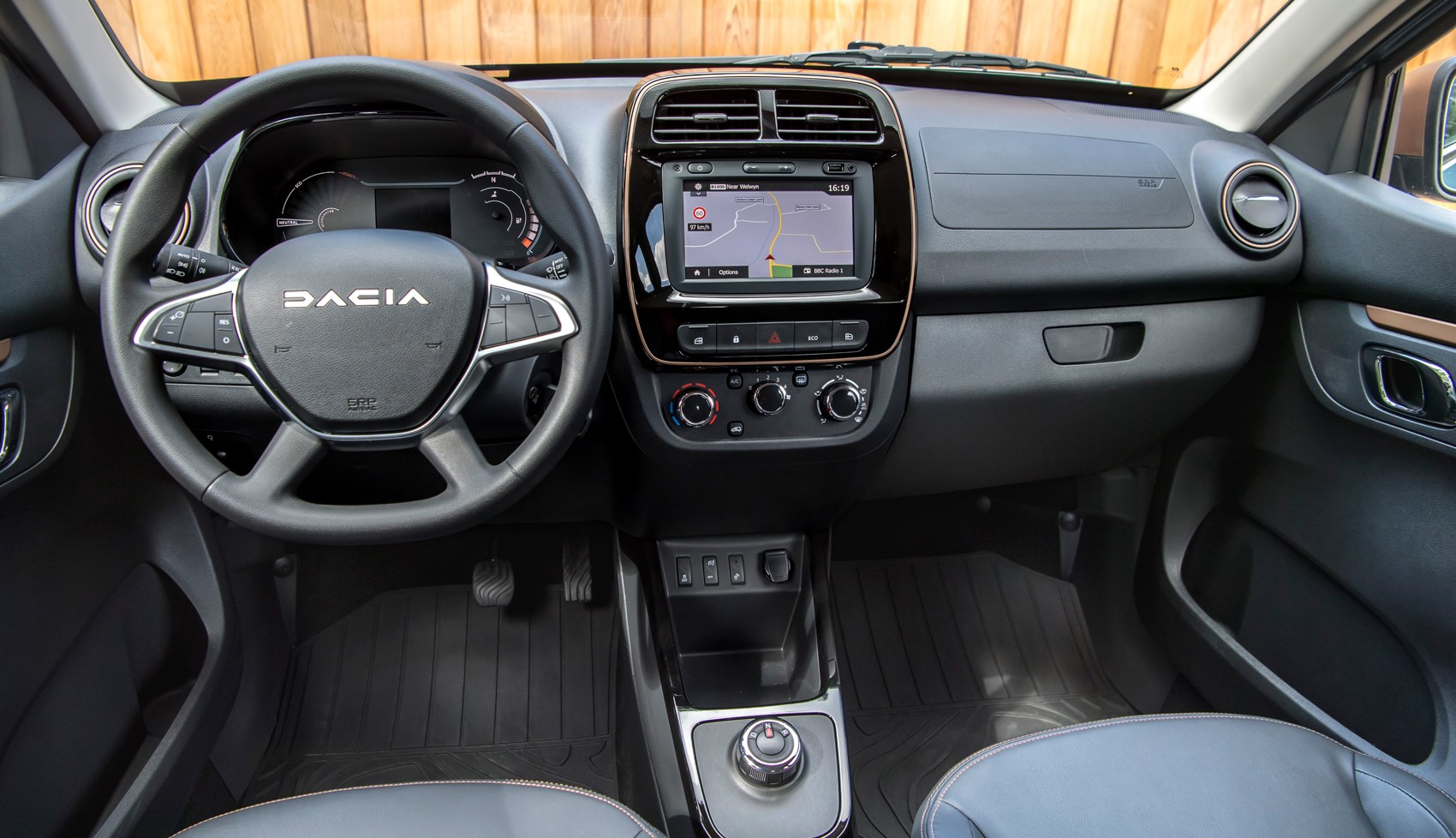
In general, the interior is a little Tonka Truck, and that’s not as much of an insult as it sounds. Every button, dial or switch is almost comically-sized. The drive shifter, for example, feels chunky to grip as you twist it, while the buttons for the window switches and the Eco mode placed in the centre of the dashboard are huge.
And with the Extreme trim, the Spring we tested featured some copper accents to add a pop of colour, which even features in the instrument cluster. The dials are clear and easy to read, and the infotainment system is user-friendly, featuring Apple CarPlay and Android Auto. Extreme trim also features neat, rubberised floor mats and squishy seats with neoprene upholstery. I however, at 6’2”, can’t recall a time I’ve ever found the perfect driving position in a Dacia and the Spring is no different – the seat is positioned a little too high, and the steering wheel does without adjustment.
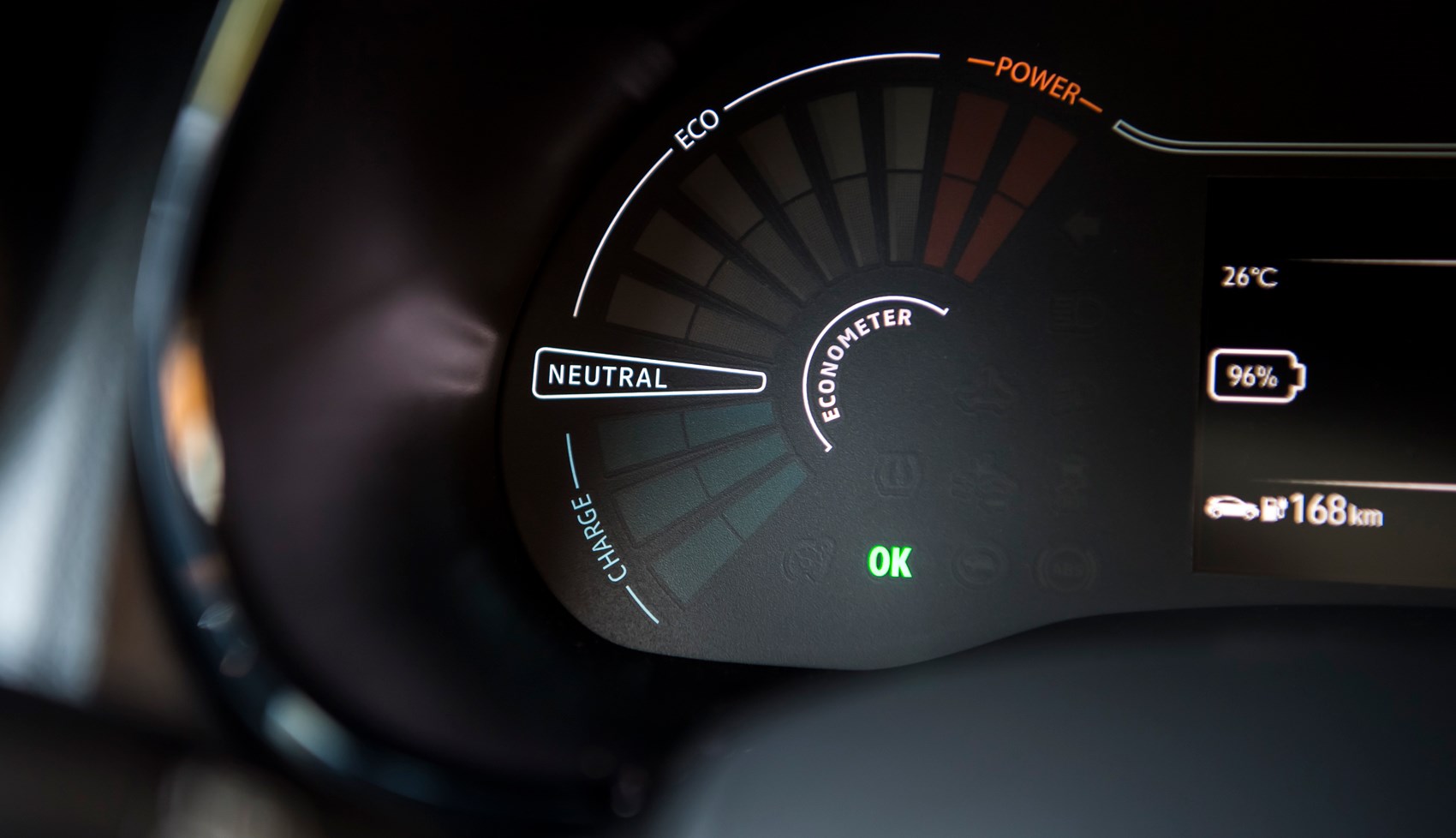
Despite its chunky looks, we had to keep reminding ourselves that the Spring is a small car, being slimmer in width (albeit a smidge longer and taller) than a VW Up. The biggest penalty is seen in the rear seats – a tall driver all but eliminates legroom for anyone other than an infant in a car seat or a small child in the seat behind, for example.
Dacia counters that, however, by providing a (relatively) big boot: 290 litres, which is reasonably square in shape, and just so happens to be larger than the Fiat 500e, VW e-Up and Peugeot e-208 – the latter being a car in the next class up.
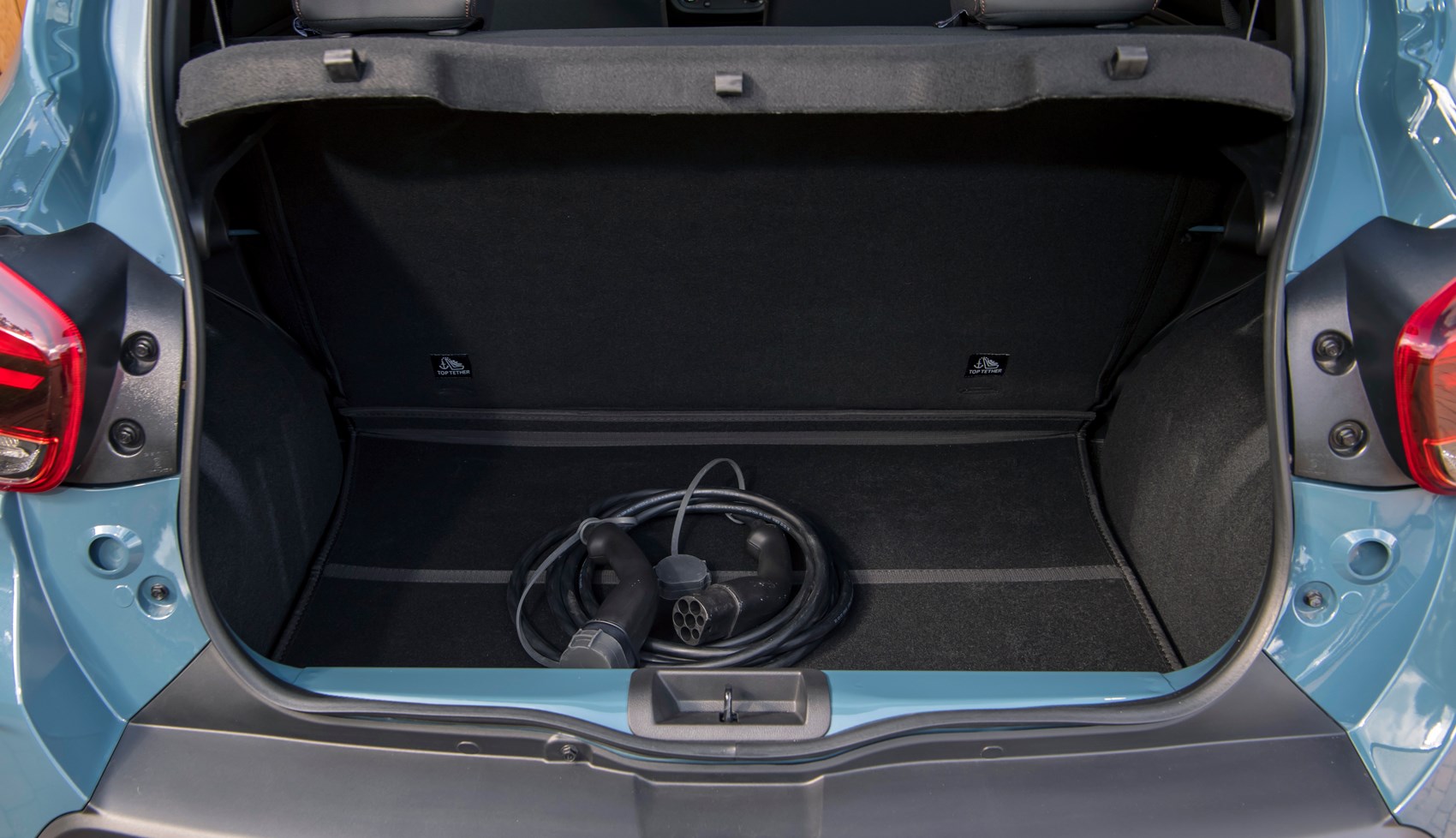
Enough foreplay, how does the Spring drive?
You climb in and start it with the key and twist the chunky drive shifter (which just features D, N and R; you park it by shifting to N and pulling the manual handbrake).

As you roll away, the charm offensive begins. The Spring’s immensely tight turning circle and diminutive size makes it a boon for parking and carving up city streets. And, because it’s an EV, there’s perky performance off the line. But that’s where the performance begins and ends – at low speeds.
The Spring is quick enough to get out of its own way, and no quicker. There’s no real complaint here as, once again, the 13.7sec 0-62mph time is roughly the same sprint time of a combustion engine city car, and much more performance can be gained from that initial 0-30mph sprint.
It’s even potent enough to manage itself well enough on the motorway, but it was a surprisingly tricky challenge to push it past 70mph and onto its (not much higher) top speed. The throttle can be dulled by the Eco mode button, but we couldn’t detect anything else.
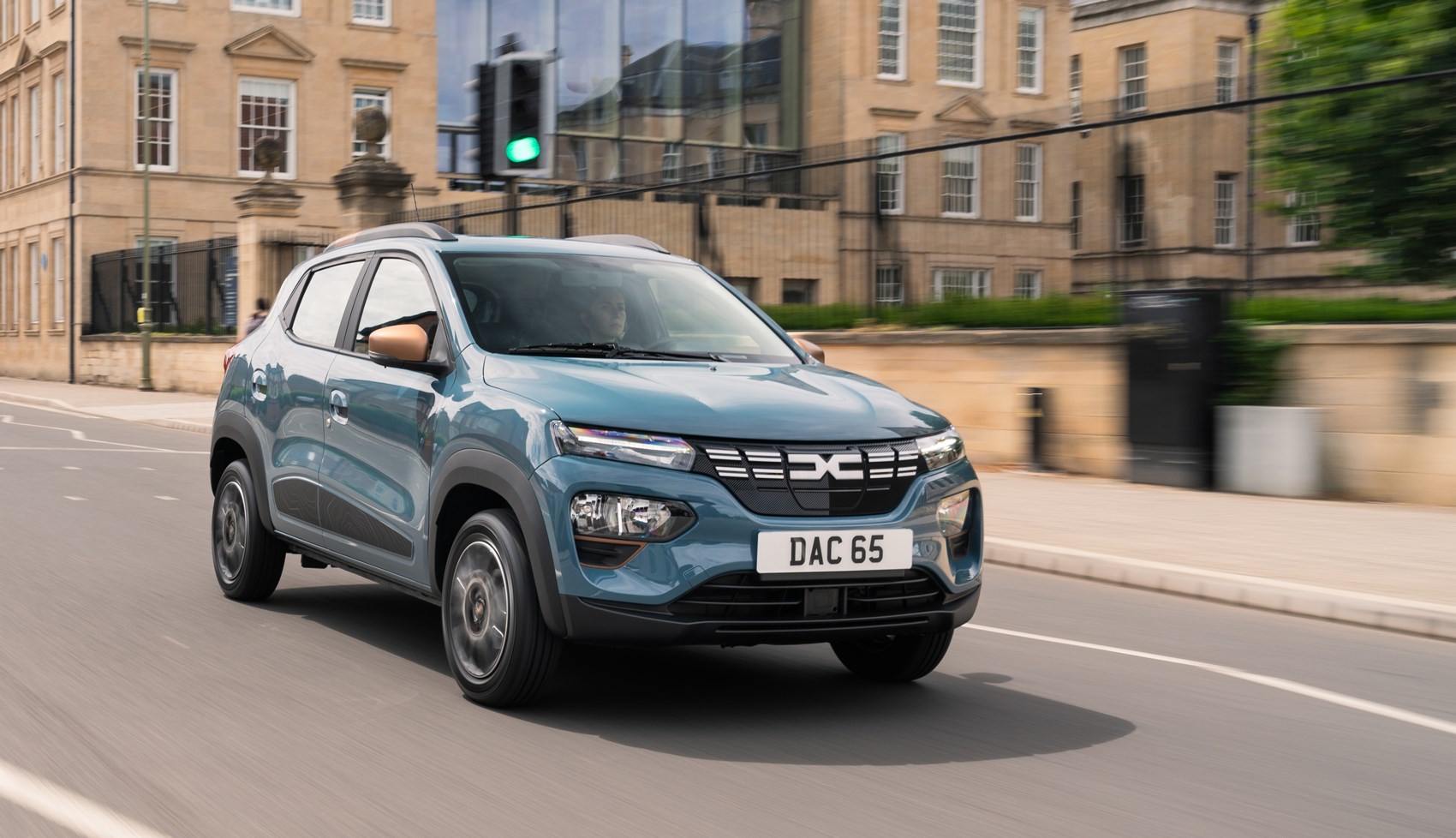
The steering is super light and easy – to the point you could drive the Spring using a single finger – but it flows naturally enough to not feel inert on a more entertaining road. The Spring’s relatively light weight and small wheels blend favourably regarding the UK’s rough roads, too, as it largely ignores smaller ruts (you hear them more than you feel them), and largely skips over bigger ones.
We’re not about to say the Spring is an eeny-weeny EV hot hatch, because it’s not. It’s not very quick, and it’s not exactly a Civic Type R in the bends. But It’s so light and chuckable, skipping about on the road (or whizzing around city streets) that it’s a car that just naturally puts a smile on your face. It’s entertaining to zip around in, and makes you question why you’d want (or need) anything bigger for most journeys. Which is exactly what Dacia is trying to convey.
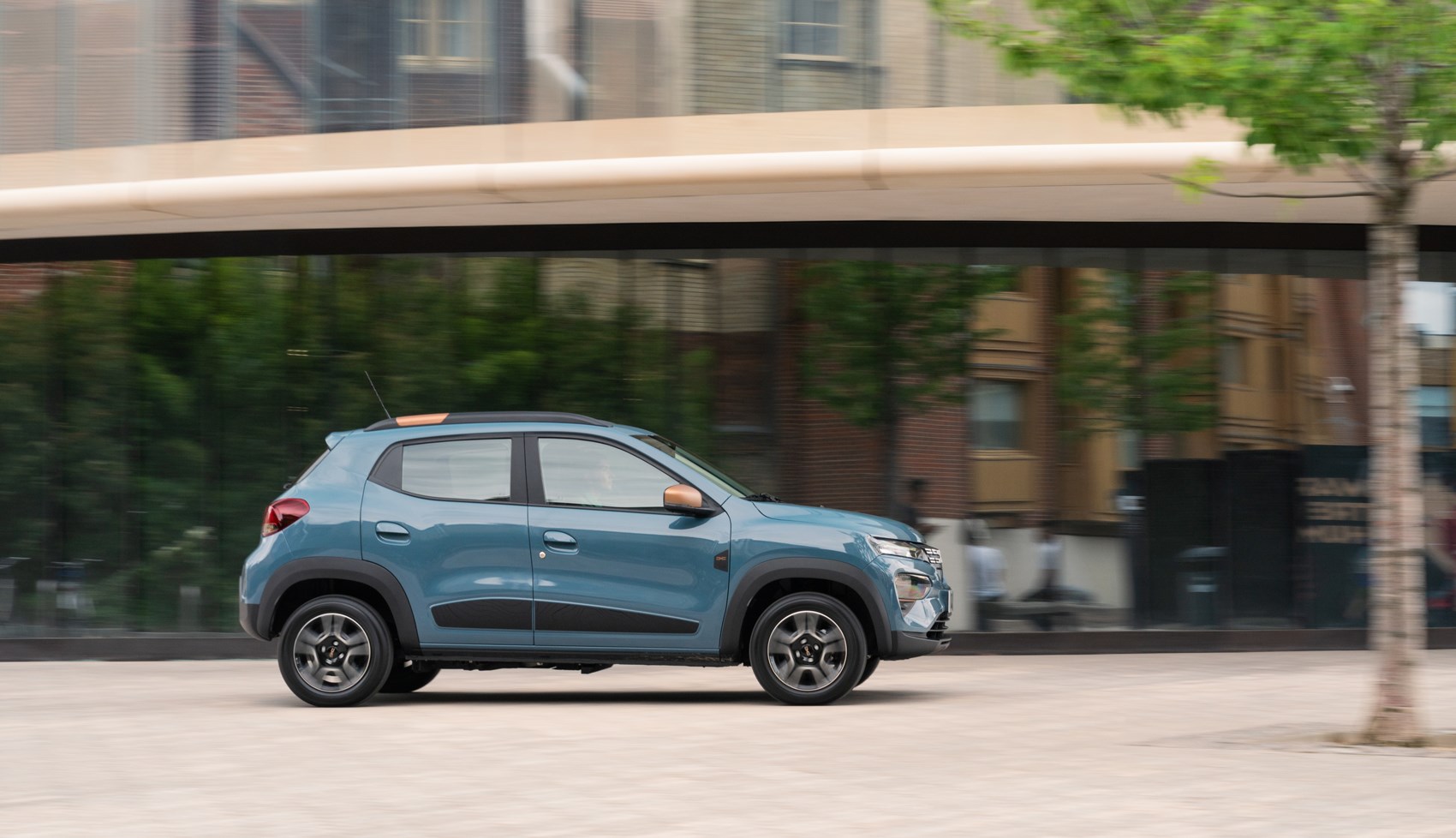
And after all of that, we still managed a very efficient 5.4 miles per kWh after around a 50-mile drive. We weren’t driving with efficiency in mind, on mixed roads (city streets, motorway stretches and twisty country roads) and yet the Spring managed to be remarkably efficient – almost ensuring it would hit, and perhaps even beat, its claimed 137-mile e-range. Nice.
Dacia Spring: verdict
It’s just a little bundle of adorableness, the Spring. Once again, Dacia’s positioning of no-nonsense motoring has come across exactly how the brand has wanted it to, convincing us that it would make a great little city runabout and showing us that an EV doesn’t have to cost the earth.
Naturally, its use case is limited (which Dacia isn’t hiding from, given it says most people use these as second cars) but, when cars with a similar range (like the Fiat 500e or Mini Electric) cost so much more, the Spring proves that it’s just not necessary. Colour us convinced.